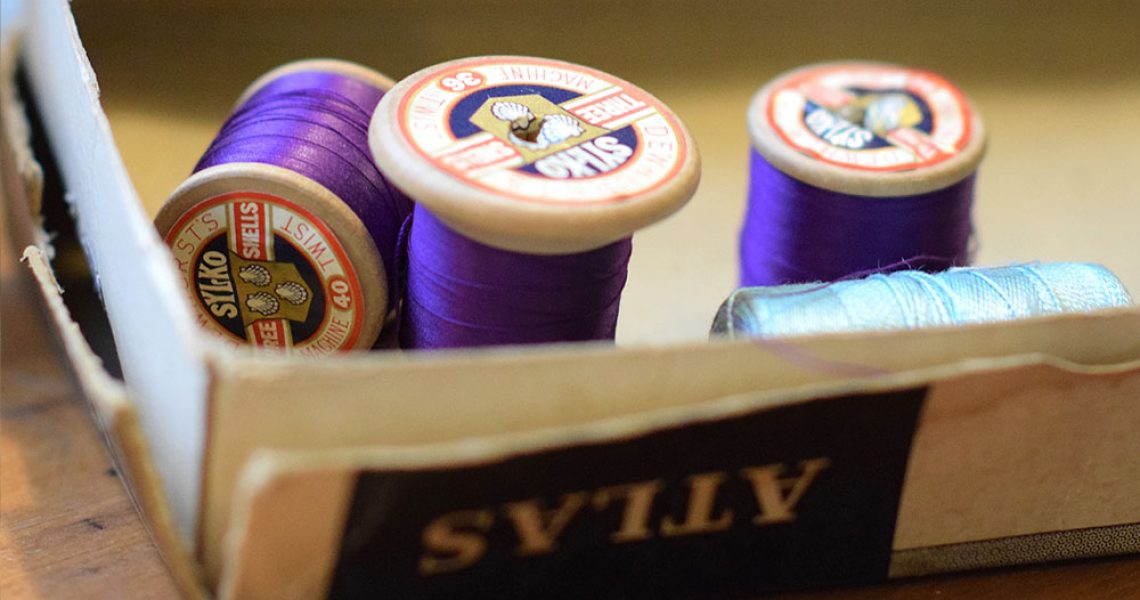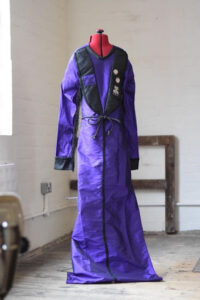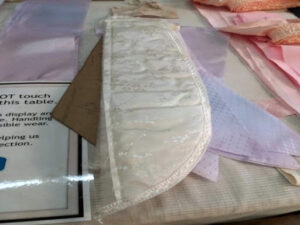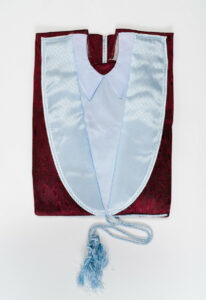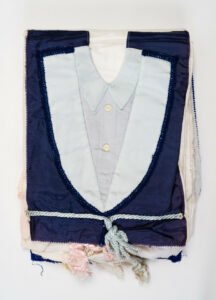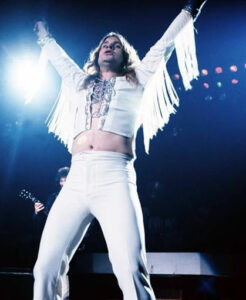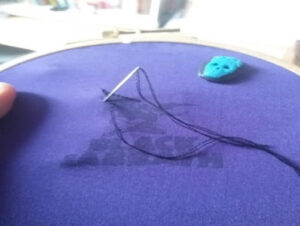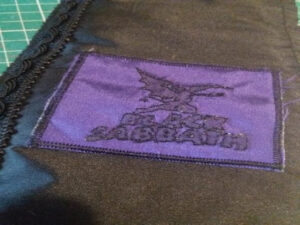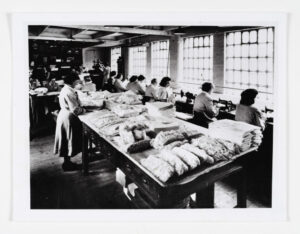 Sarah gave me a spare white shroud that was made by Newman Bros and I was privileged enough to take it apart. I also took a lot of pictures of the shrouds in the collection, as well at the blocks (sewing patterns if you like but made of cardboard so they can be used and reused). When I took the white shroud apart, I was struck at first by how basic it is. I am used to making dresses, where the inside has to look as good as the outside, with darts and pleats to mould the human body, with concave shapes that have to match convex ones, lots of curves, finishing touches to make sure the garment doesn’t unravel… None of that was needed for the shroud!
Sarah gave me a spare white shroud that was made by Newman Bros and I was privileged enough to take it apart. I also took a lot of pictures of the shrouds in the collection, as well at the blocks (sewing patterns if you like but made of cardboard so they can be used and reused). When I took the white shroud apart, I was struck at first by how basic it is. I am used to making dresses, where the inside has to look as good as the outside, with darts and pleats to mould the human body, with concave shapes that have to match convex ones, lots of curves, finishing touches to make sure the garment doesn’t unravel… None of that was needed for the shroud!
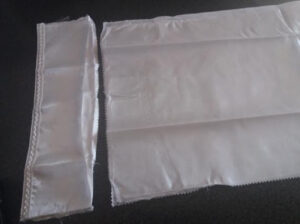 The main body is a rectangle, but so are the sleeves. If you’ve ever sewn a garment, you’d have noticed that a traditional sleeve is usually tapered at the cuff, and has funny curves at the top to fit to the arm hole. The shrouds are embellished with cuffs, lapels, a collar, and some trims.
The main body is a rectangle, but so are the sleeves. If you’ve ever sewn a garment, you’d have noticed that a traditional sleeve is usually tapered at the cuff, and has funny curves at the top to fit to the arm hole. The shrouds are embellished with cuffs, lapels, a collar, and some trims.
But even those are basic in shape. The cuffs and collar are rectangles that just happen to be the same size – everything can fit on a width of fabric and there is very little fabric waste. The straight lines make it very quick to cut, especially with a trimmer. There aren’t any hems – with no wear and tear, the edges are left raw and are simply cut in a zigzag shape (which I achieved with pinking shears) which is again unheard of in dressmaking!
At Home of Metal this year we are celebrating 50 years of Black Sabbath with an exhibition dedicated to the Brummie band. My Home of Metal shroud is an homage to Black Sabbath.
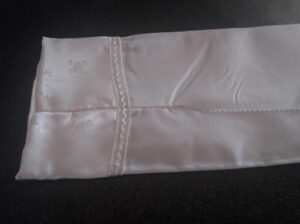 The shroud is usually laid on the body in the coffin so it has no back (a bit like a hospital gown). The sleeves are pulled up the arms, but again, they are left open under the arm and are only sewn together at the cuff. I wanted my reproduction to be as faithful as possible but was conscious that visitors might like to either try it on or at least see it on a mannequin. So unlike the real thing, I added Velcro straps on the shoulders to attach the sleeves to the main body of the gown, to the sleeves in order to close them around the arm, and to the collar. I could not help myself trying on the shroud once finished, and realised how small it actually is. As it is designed to simply cover the body, it does not have to fit properly but just make sure no skin is exposed. As there is no movement, the need for fabric is minimal.
The shroud is usually laid on the body in the coffin so it has no back (a bit like a hospital gown). The sleeves are pulled up the arms, but again, they are left open under the arm and are only sewn together at the cuff. I wanted my reproduction to be as faithful as possible but was conscious that visitors might like to either try it on or at least see it on a mannequin. So unlike the real thing, I added Velcro straps on the shoulders to attach the sleeves to the main body of the gown, to the sleeves in order to close them around the arm, and to the collar. I could not help myself trying on the shroud once finished, and realised how small it actually is. As it is designed to simply cover the body, it does not have to fit properly but just make sure no skin is exposed. As there is no movement, the need for fabric is minimal.
